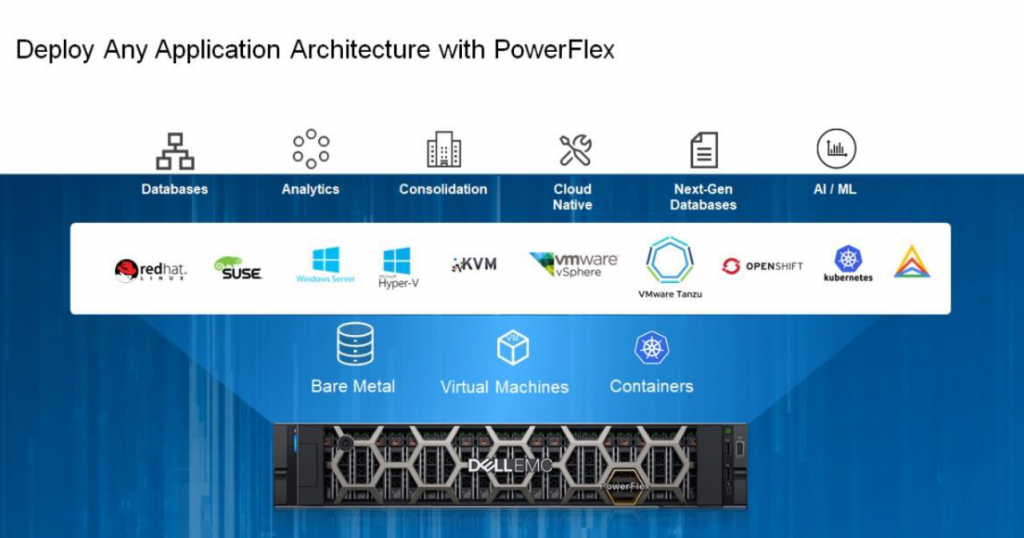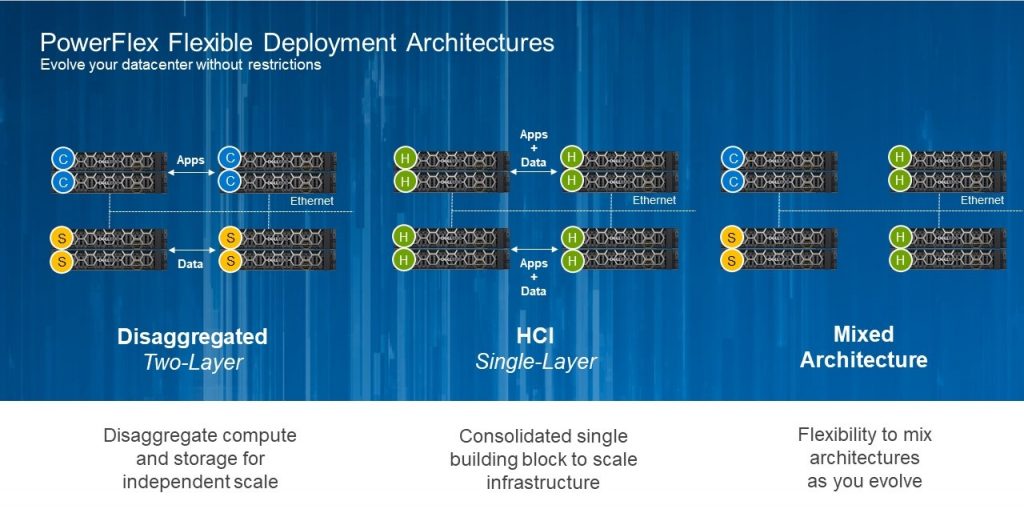It feels like Dell has been “Powering up” all EMCs heritage products lately (pun intended). From products like PowerMax, PowerStore, and PowerScale; everything seems to be getting the PowerEdge treatment and a new name to show it. The latest of these announcements is the re-branding of “VxFlex OS” to “PowerFlex” (which in my opinion sounds like the name of a WWE wrestler from the 90’s). PowerFlex 3.5 introduces some much needed features like Native Asynchronous Replication, a new HTML-5 based UI, a new maintenance mode called Protected Maintenance Mode (PMM), Secure Snapshots, SDC Authentication and other resiliency enhancements. These are some much needed updates that should make PowerFlex a much more well-rounded solution. In this post I will review some of latest changes to the PowerFlex Family.
Native Asynchronous Replication
- Native Asynchronous Replication for storage-only/two-layer configurations.
- Fully operational disaster recovery with RPO of 30 seconds to 1 hour.
- Flexible Source-Target configurations (node count, media and layout).
HTML-5 based UI
- Enhanced ease of use with a new HTML-5 based UI.
- New web application to replace Java-based desktop application.
Protected Maintenance Mode
- New maintenance mode that enables two “live”, available copies of data at all times.
- Efficient rebuild when node comes out of maintenance mode.
Secure Snapshots
- Snapshots that cannot be deleted.
- Enables compliance with financial and healthcare industry verticals where data cannot be deleted for a specific duration of time.
SDC Authentication
- SDC-to-MDM authentication via CHAP.
- SDC-to-SDS and SDS-to-SDR authentication using unique runtime secret.
General System Enhancements
- FG (Fine Granularity) metadata cache for higher FG performance.
- Sub-device error handling for improved resiliency
Updated Operating System and Ecosystem Matrix
- Added support for RHEL/CentOS 7.8, 8.1, 8.2
- Added support for vSphere 7 compute
- OpenStack “Ussuri”
Now, some of you may not know what VxFlex or PowerFlex even is. The quick and dirty explanation is PowerFlex is a unique HCI offering that offers the ability to scale compute and storage independently. It comes as a Ready Node, an appliance, or a PowerFlex integrated rack. But the coolest option in my opinion is as software only, in the form of PowerFlex OS (previously VxFlex OS). This software layer is “the heart” of the PowerFlex family.

Now I am a huge VxRail fan boy but there are a few key differentiators that make PowerFlex unique in the HCI market. First, it has support for multi-hypervisor and bare metal environments. That’s right; you don’t even need a hypervisor. You can deploy the software across physical servers as well. The second unique feature is all of its deployment options. You can deploy your PowerFlex system either as HCI where compute and storage reside on the same server, or as a two-layer model meaning your storage and compute nodes remain separate, so you have the flexibility to manage each infrastructure independently. And lastly, PowerFlex really excels at high performance for apps and databases delivering millions of IOPS at consistent sub-millisecond response times. This thing is smoking fast…

It will be interesting to see where Dell EMC takes PowerFlex in the future. But if this product refresh says anything, it’s that Dell EMC is continuing to invest in their HCI offerings and PowerFlex is here to stay. With the HCI market continuing to be growing like crazy every year, it looks like PowerFlex has come to play with these latest updates.